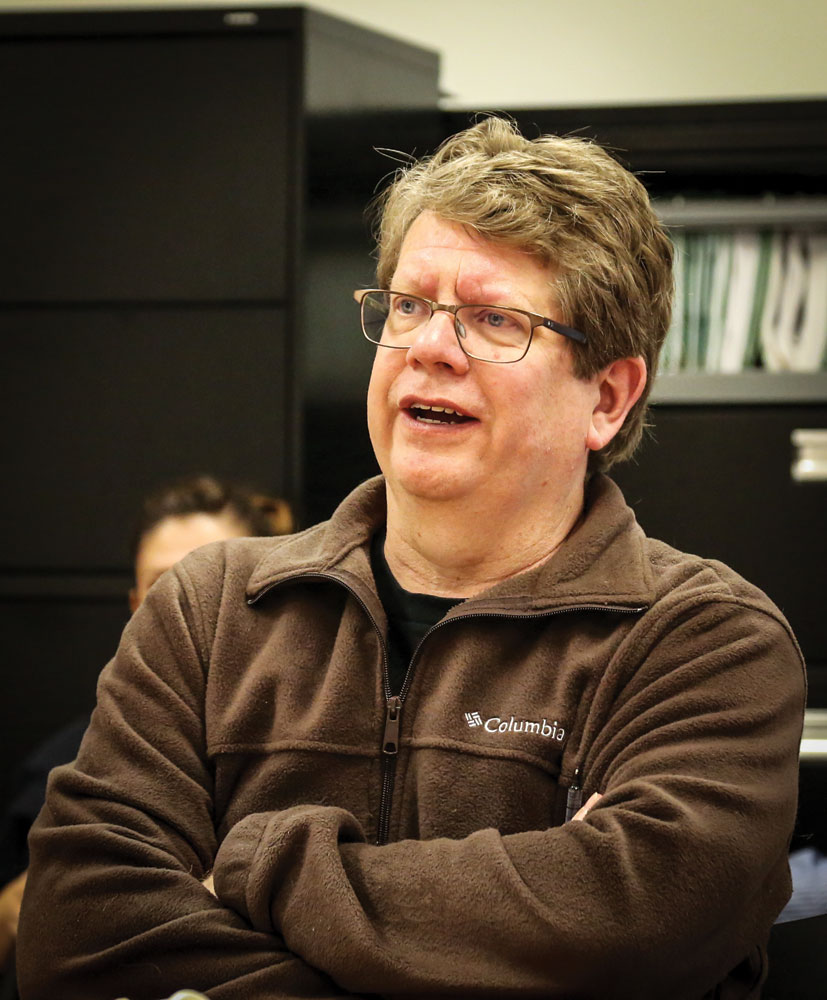
David Netz shares his thoughts about Stapleton after announcing his departure from his position as co-chair of the Stapleton Citizens Advisory Board.
For David Netz, Stapleton represented an opportunity to participate in a 20-year local “experiment,” bringing to bear a lifetime of world travel and work experience. Netz stepped down as co-chair of the Stapleton Citizens Advisory Board (CAB) in July after six years at the helm. CAB is charged with advising the Stapleton Development Corporation (SDC) on the build-out of Stapleton and master developer Forest City’s performance.
Netz may be leaving but he has clear ideas about what needs to happen in Stapleton going forward.
He points to housing diversity as the “number one unmet goal at this stage. The good news is that during a massive national recession, Stapleton kept moving. The bad news is that it kept moving because it just built a ton of higher-income single-family homes.”
Netz worries that Forest City and Denver may miss the market for multi-unit housing. The number one action for CAB and SDC is to prepare a map documenting where sites have been set aside in Stapleton for for-sale affordable housing units and rental apartments. Without this kind of planning, he says build-out might occur without enough land reserved for affordable housing: “Where will the affordable housing go? It’s more than diversity of people by income, by education, by age—it is also healthier long term not to have just one type of housing. Besides, it’s city-owned land and a requirement of the development agreement.”
He has urged the city to work with the property owners in the industrial area located between Sand Creek and the Central Park station to study the potential for this “untapped opportunity” for mixed-use development including a substantial number of affordable housing units.
Netz’s second disappointment with Stapleton has been a “backing away” from the Green Book vision of mixed-use town centers. He applauds Forest City for having committed to the East 29th Ave. Town Center but says the other potential mixed-use areas “have been somewhat emasculated. They are turning into tract shopping, a step above strip centers because of design guidelines but still not an optimal design.”
Despite regular plaudits for his guidance of annual reviews of Forest City’s performance, Netz says CAB can only do so much. He says the “weak link is the city’s unwillingness to drive Forest City to follow the advice of CAB.”
The Denver-area native says he has traveled to over 45 counties and “spent more time in Berlin, Tokyo and Singapore than I have in LA, New York or Chicago” and from this gets a sense of what makes a world-class city.
The opportunity at Stapleton, the country’s largest urban infill project, drew Netz to move to Stapleton in 2005. Then began a slew of volunteer activities that included membership on the Zoning and Planning Committee, CAB, the Northeast Transportation Connection Advisory Board, and the task force that developed the plan for Stapleton’s transit-oriented development (TOD) site. Netz says the implementation of Stapleton has been even better than the Green Book, the document that set forth the vision for redevelopment of the former airport site. He says groups such as CAB “should receive more credit for their efforts. There have been almost 30 years of collaborative efforts to bring about the move of the airport and replacement with something better than strip malls and discount housing. Citizen involvement has resulted in better plan implementation.”
From Netz’s perspective, Stapleton adds to factors favoring Denver’s status as a “global gateway.” Picture a city that’s a “little isolated island between the prairie and the mountains,” virtually the only city in a land mass the size of Europe, from Salt Lake City to Kansas City, from Winnipeg to El Paso. If metro Denver is smart and builds for the future, this is a long-term sustainable place to be.”
Stapleton has the “bones” to enable that long-term sustainability, says Netz. He points to the street system, design guidelines, park and open space systems that make Stapleton a long-term win-win for the city, both financially and in terms of livability. And, he adds, improvements over the original Green Book plan include the park network and the extension of Martin Luther King and Central Park boulevards.
Netz is moving to the Applewood neighborhood of Jefferson County to be closer to aging parents and to reduce his wife Nancy’s daily commute working as a speech therapist in Jefferson County schools. Ever the observer of urban trends, Netz’s move was also motivated in part by the prospect of an even worse commute for his wife as the “Central 70” highway expansion gets underway. While he acknowledges that I-70 must be widened, he says a rational plan would have first called for widening of I-270 and I-76 to serve as a relief loop associated with the eventual expansion of I-70, whether as a boulevard or as a depressed 10-lane highway as shown in the currently adopted plan.
Unlike his parents who grew up on farms, Netz says he had the “luxury of growing up in a city and living for years without a car in Germany and Japan.” There he came to appreciate “quality infrastructure that helps people and doesn’t all have to be built around a car.”
He remains optimistic that important pieces of Stapleton infrastructure will be funded as build-out approaches, including the addition of lanes for the Central Park Blvd. overpass, the widening of the Havana St. bridge to four lanes, and a new Smith Rd. bridge over Sand Creek, construction of joint-use sports fields at the Northfield High School campus, and completion of the trail network linking the wildlife refuge to surrounding neighborhoods.




The international perspective here is refreshing. Love the thought about not focusing life around a car. When I lived in Chicago the infrastructure there made it pleasant to be without a vehicle.